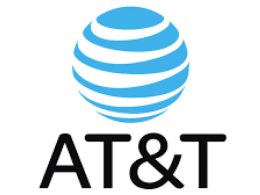Meta Transforms Messaging: Full Encryption on Facebook and Messenger
Introduction
Welcome to an insightful journey into the world of technology. Our guide for this exploration is Alex Mercer, a seasoned tech writer with over a decade of experience in covering the latest tech trends and developments. Alex has a keen interest in cybersecurity and has been closely following Meta’s journey towards implementing end-to-end encryption.
Understanding End-to-End Encryption
End-to-end encryption (E2EE) is a system of communication where only the communicating users can read the messages. In principle, it prevents potential eavesdroppers – including telecom providers, Internet providers, and even the provider of the communication service – from being able to access the cryptographic keys needed to decrypt the conversation. This ensures that your messages, calls, and even video chats are communicated in a secure manner, giving you peace of mind that your conversations stay between you and the person you’re communicating with.
Meta’s Journey Towards Full Encryption
Meta, the parent company of Facebook and Messenger, has been on a mission to implement E2EE across all their platforms. This journey has not been without its challenges. From technical hurdles to backlash from governments and law enforcement agencies, Meta has had to navigate through a myriad of issues. Despite these challenges, Meta has remained steadfast in its commitment to user privacy and security.
The Impact of Full Encryption on Users
With the implementation of E2EE, Meta aims to give users confidence that their personal messages will remain private. This means that whether you’re sharing a photo, sending a message, or making a video call, you can do so knowing that your conversations will be secure. This level of security is especially important in today’s digital age, where data breaches and cyber threats are becoming increasingly common.
The Controversy Surrounding Full Encryption
While E2EE is a significant step forward in enhancing user privacy, it has also sparked controversy. Law enforcement agencies have expressed concern that E2EE could potentially be misused by malicious actors to evade detection. Despite these concerns, Meta maintains that the benefits of E2EE in protecting user privacy outweigh the potential risks.

The Future of Messaging with Meta
As Meta moves closer to achieving its goal of full encryption by 2024, it’s exciting to speculate on what this could mean for the future of messaging. With enhanced security and privacy, users may feel more comfortable sharing sensitive information over these platforms. This could potentially lead to a shift in how we communicate online, with more people opting for platforms that offer E2EE.
Key Points of Meta’s Full Encryption
| Key Point | Details |
|---|---|
| What is E2EE? | A system of communication where only the communicating users can read the messages. |
| Meta’s Journey | Meta has been working towards implementing E2EE on Facebook and Messenger. |
| Impact on Users | Enhanced privacy and security for users. |
| Controversy | Concerns raised by law enforcement over potential misuse. |
| Future | Meta aims to achieve full encryption by 2024. |
Conclusion
In conclusion, Meta’s move towards full encryption is a significant step forward in enhancing user privacy and security. While there are valid concerns about potential misuse, the benefits of E2EE in protecting user privacy cannot be overlooked. As we move into an increasingly digital age, the importance of secure communication cannot be overstated. With Meta leading the way, it will be interesting to see how other tech giants respond to this shift towards a more secure internet.












